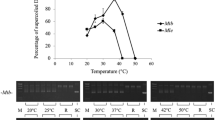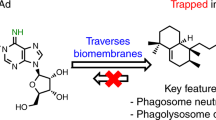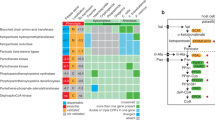Abstract
THE inability to culture Mycobacterium leprae in vitro has been a great obstacle to the progress of research in leprosy. This obstacle has been in part overcome by the introduction of the morphological index for the assessment of the viability of M. leprae, although the index is relatively crude. Biochemical studies1,2 have revealed the specificity of the enzyme o-diphenoloxidase in relation to M. leprae as opposed to other bacteria included in the genus of mycobacteria. o-Diphenoloxidase oxidises 3,4-dihydroxyphenylalanine (DOPA) to quinone.
This is a preview of subscription content, access via your institution
Access options
Subscribe to this journal
Receive 51 print issues and online access
$199.00 per year
only $3.90 per issue
Buy this article
- Purchase on Springer Link
- Instant access to full article PDF
Prices may be subject to local taxes which are calculated during checkout
Similar content being viewed by others
References
Braganca, B. M., and Prabhakaran, K., thesis, Bombay University (1964).
Prabhakaran, K., Int. J. Lep., 35, 42–51 (1967).
Drutz, D. J., and Cline, M. J., J. infect. Dis., 125, 416–419 (1972).
Shepherd, C. C., Am. J. Hyg., 71, 147–157 (1960).
Rees, R. J. W., Walters, M. F. R., Weddell, A. G. M., and Palmer, E., Nature, 215, 599–602 (1967).
Author information
Authors and Affiliations
Rights and permissions
About this article
Cite this article
AMBROSE, E., ANTIA, N. & KHONOLKAR, S. Uptake of radioactive DOPA by M. leprae. Nature 249, 854–855 (1974). https://doi.org/10.1038/249854a0
Received:
Revised:
Issue Date:
DOI: https://doi.org/10.1038/249854a0
This article is cited by
-
Anin vitro test using cholesterol metabolism of macrophages to determine drug sensitivity and resistance ofMycobacterium leprae
Journal of Biosciences (1984)
-
Anin vitro system to study drug sensitivity ofMycobacterium leprae using infected human tissue
Journal of Biosciences (1983)
Comments
By submitting a comment you agree to abide by our Terms and Community Guidelines. If you find something abusive or that does not comply with our terms or guidelines please flag it as inappropriate.



